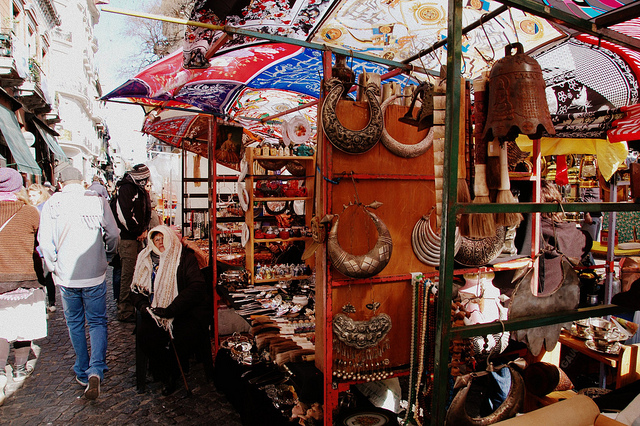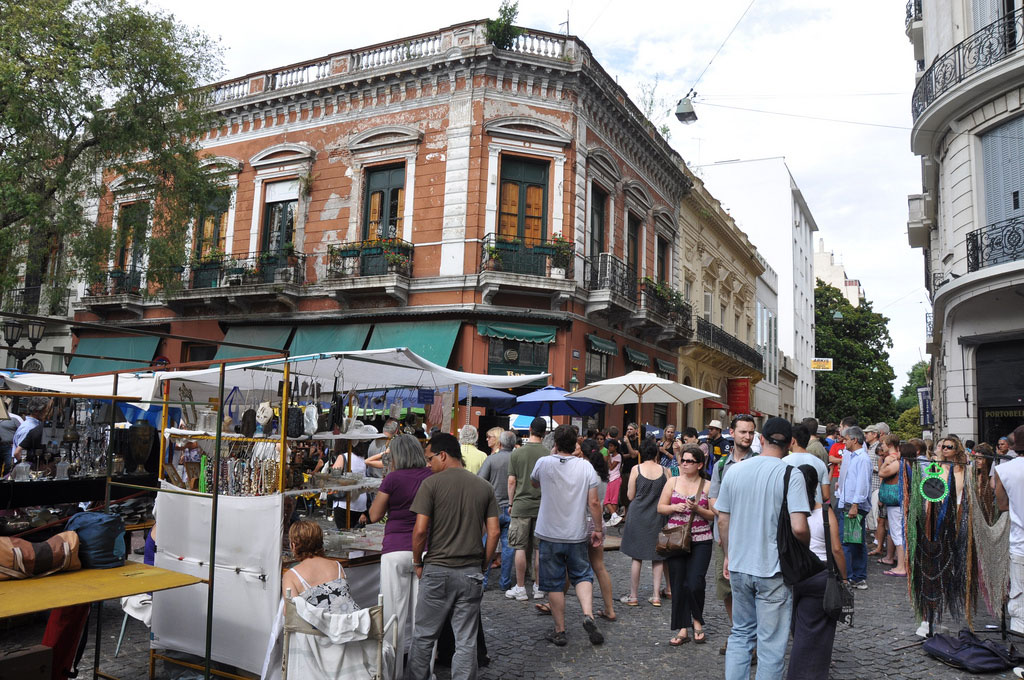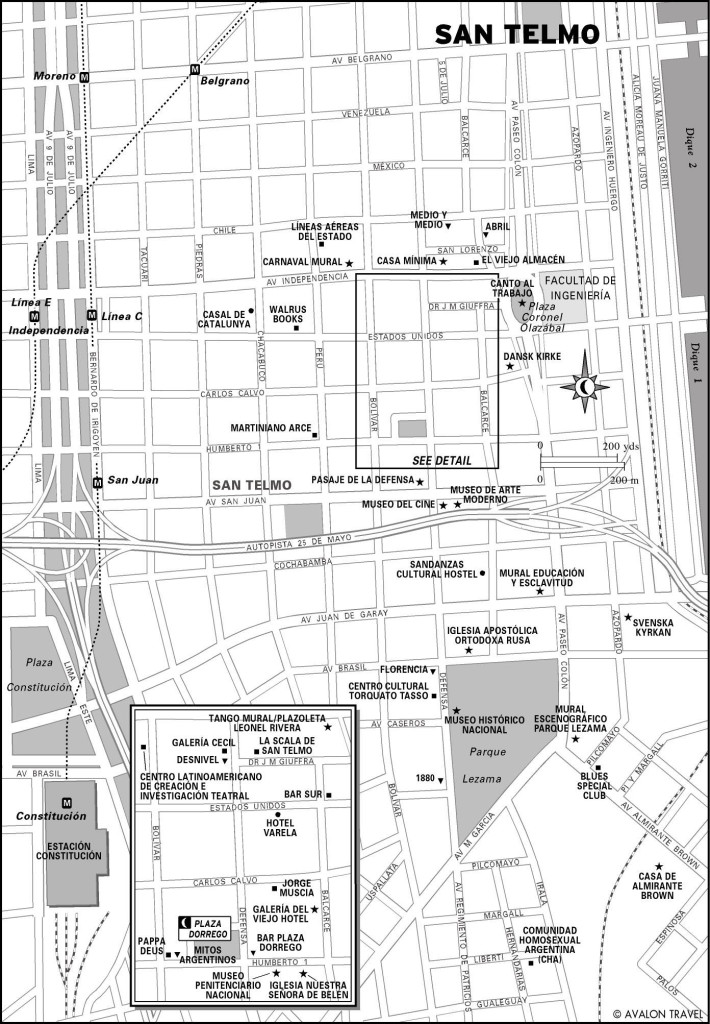After elite families fled an 1870s yellow fever epidemic and moved to northern barrios like Palermo and Belgrano, San Telmo became an area where impoverished immigrant families could find a foothold in conventillos, abandoned mansions where large families filled small spaces—often a single room. Today it’s a mixed neighborhood where conventillos still exist, but young professionals have also recycled crumbling apartment buildings and even industrial sites into lofts. It’s also closely linked to tango, or at least the high-priced spectacle with professional dancers.

Antiques for sale in San Telmo’s weekend flea market. Photo © LWYang, licensed Creative Commons Attribution.
While colonial Spanish law dictated rectangular city blocks of equal size, San Telmo breaks the rules. North-south Calle Balcarce, for instance, doglegs between Chile and Estados Unidos, crossing the cobblestone alleyways of Pasaje San Lorenzo and Pasaje Giuffra. The Casa Mínima (Pasaje San Lorenzo 380) takes the vernacular casa chorizo (sausage house) style to an extreme: This two-story colonial adobe is barely wider than an average adult male’s armspread.
To the east, on Paseo Colón’s Plaza Coronel Olazábal, Rogelio Yrurtia’s massive sculpture Canto al Trabajo (Ode to Labor), a tribute to hardworking pioneers, is a welcome antidote to pompous equestrian statues elsewhere.
San Telmo’s heart, though, is Plaza Dorrego (Defensa and Humberto Primo), site of the hectic weekend flea market. At Defensa and Avenida Brasil, a statue of Pedro de Mendoza guards the entrance to Parque Lezama, where Mendoza ostensibly founded the city in 1536.
Six days a week, Plaza Dorrego is a shady square where Porteños sip cortados and nibble lunches from nearby cafés. Sundays, though, it swarms with visitors who stroll among antiques stalls at the Feria de San Pedro Telmo (starting around 9am or 10am-late afternoon Sun.), the most famous of the capital’s street fairs. Items range from soda siphons to brightly painted calligraphy plaques with piropos (aphorisms), oversized antique radios, and many other items. The plaza and side streets also fill with tangueros (tango dancers), puppet theaters, hurdy-gurdy men, and estatuas vivas (“living statues” or costumed mimes). The sidewalk and balcony cafés overlooking the plaza are ideal for enjoying the show.

The market at Plaza Dorrego. Photo © Jorge Lascar, licensed Creative Commons Attribution.
Like many Argentine museums, Parque Lezama’s Museo Histórico Nacional Defensa 1600, tel. 011/4307-1182, [email protected], 11am-6pm Wed.-Sun., free) underwent an overhaul for the 2010 bicentennial, with new and surprisingly evenhanded material on Peronism (note Juan Perón’s Grundig tape recorder, which he used to communicate to his faithful), the state terror of the Dirty War, and the 1980s democratic restoration.
There are also thematic exhibits, such as daguerreotypes of famous but also anonymous figures from early-19th-century Argentina, that border on a social history often overlooked in such museums. More conventionally, there’s a re-creation of liberator José de San Martín’s French bedroom-in-exile, portrait galleries of figures such as San Martín and independence intellectual Mariano Moreno, and massive oils that romanticize General Julio Argentino Roca’s brutal Patagonian campaigns.
The building itself is a well-kept landmark whose subterranean gallery hosts special exhibits and occasional concerts.

San Telmo
Excerpted from the Fourth Edition of Moon Patagonia.